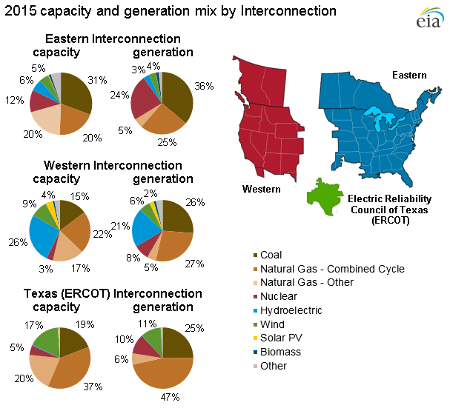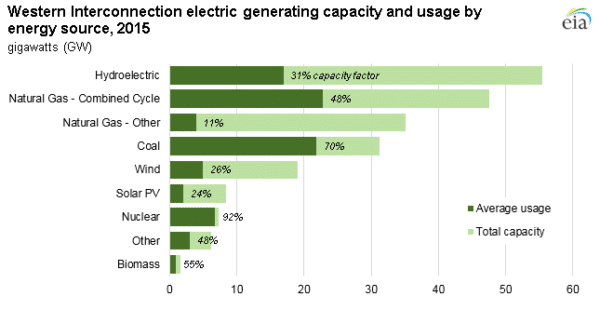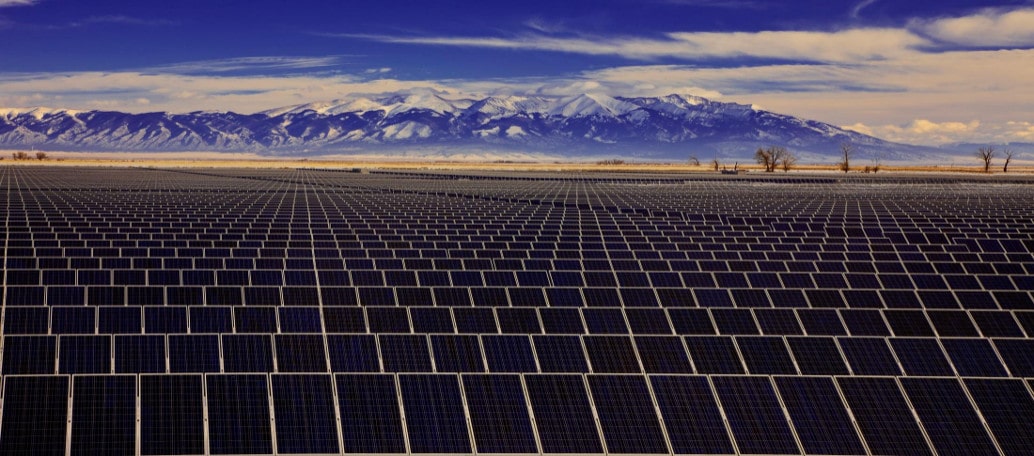West of the Rocky Mountains, the electricity mix in the United States and Canada looks something like Western Europe – a lot of gas, coal and hydroelectric generation, but also an increasing supply of wind and solar, comprising 6% and 2% of total electricity generation in 2015.

East of the Rocky Mountains (and excluding Texas) it is a different story. Coal remains king on the Eastern Interconnection grid, with wind supplying only 4% of generation and solar less than 1%. Likewise in Texas solar does not even show up on the map, although wind supplied 11% of power on the Texas grid last year.
These sharp differences were highlighted in data released this week by the U.S. Department of Energy’s Energy Information Administration (EIA). EIA shows that the transition to renewable energy is farther ahead in the Western United States, particularly as regards solar.
This transition is further concentrated in a few states. An analysis by kWh Analytics and SEIA published last June showed that when distributed solar was included, California and Arizona both got from 5-6% of their electricity from solar PV over the previous 12-month period.
EIA also provided information on average capacity factors, which are a measure of actual output versus rated capacity over time, or how many kilowatt-hours of energy are produced per kilowatt of peak capacity. These again showed wide regional differences, with the agency giving an average 24% capacity factor to solar in the Western United States, but only a 13% to solar in the EastConnect.
 This is likely due to both solar being deployed in sunnier areas in the West, but also a higher portion of utility-scale versus distributed generation. The small amount of solar online in Texas came in at only 14%.
This is likely due to both solar being deployed in sunnier areas in the West, but also a higher portion of utility-scale versus distributed generation. The small amount of solar online in Texas came in at only 14%.
Solar’s contribution to the electricity mix will grow substantially in coming years, as there is currently more than 10 GW of utility-scale solar alone under construction in the United States. This is particularly true of Texas, where the grid operator predicts that 13 GW will come online by 2030.
Capacity factors are also set to rise, due to a higher portion of utility-scale projects using tracking technology, which is increasingly being deployed in areas like the Midwest instead of only the Southwest.
However, we have a long way to go.
This content is protected by copyright and may not be reused. If you want to cooperate with us and would like to reuse some of our content, please contact: editors@pv-magazine.com.









By submitting this form you agree to pv magazine using your data for the purposes of publishing your comment.
Your personal data will only be disclosed or otherwise transmitted to third parties for the purposes of spam filtering or if this is necessary for technical maintenance of the website. Any other transfer to third parties will not take place unless this is justified on the basis of applicable data protection regulations or if pv magazine is legally obliged to do so.
You may revoke this consent at any time with effect for the future, in which case your personal data will be deleted immediately. Otherwise, your data will be deleted if pv magazine has processed your request or the purpose of data storage is fulfilled.
Further information on data privacy can be found in our Data Protection Policy.